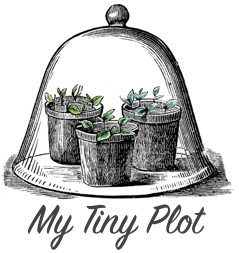‘Bastard Trenching’ – I get it

I’d never really understood what bastard trenching was. I had heard the term on TV programmes and read it in some books but never truly ‘got it’. Anyone can dig a trench right? But to use trenching correctly as a form of cultivating the soil – well, now we’re in flat-cap territory.
But I picked up a book in an old bookshop called ‘ABC of Gardening’ by W E Shewell-Cooper. It was written in 1940 and contains a great description of bastard trenching.
So it’s basically like a conveyor belt of soil. You mark out an oblong of land (or bed) into small squares (you can do this mentally if you like). You dig out the first square to a depth of one spit (spade depth). You dump this in your wheelbarrow and take it to just beyond the end of your oblong and empty it. Then you proceed to fork up the bottom of the pit that you’ve just made, add some manure and dig it in well. Then you move to the next square and do the same again. But instead of putting the removed soil in the wheelbarrow you dump it in the first square.
This is genius – why? Because all the soil stays in the right place. The top-soil stays on top, the sub-soil is cultivated and manure is added in the right place. Then everything is put back in the right order like a giant jigsaw. Now I realise that bastard trenching is what some people call double digging – now I get it!
 My Tiny Plot
My Tiny Plot



I have been spit digging for years and years until I discovered the joys of no-dig gardening. I have laid a few carpets down to make narrow paths so I don’t have to walk on the soil. I lay mulch and compost on the top of the soil and the worms do the digging for me!
Hi Matron, That sounds great – how does that work out for you? Any downsides?
I would recommend, no-dig gardening to everyone. Have a wiki on permaculture and check out no-dig. Its what the guys on “it’s Not easy being green” programme used.
Check out http://www.safecom.org.au/permaculture.htm
That’s a good starting point :)
On another note, I would love to see your blog in book form one day… it is an invaluable journal of knowledge for newbies like me!
hi matron, quick question because I am just starting out. If you don’t dig and you pile compost on top all the time, don’t the beds end up really high? I can imagine my veg rolling out of bed ….because the little one said!…you know? I took on a plot in Barnet, n. london last autumn and dug most of it in time for some frost but it was hard work and the thought of double digging seems a lot of trouble to go to if it’s not as good as your no-dig strategy.
Great site this! Well done. It’s lovely.
Hi Luke – I don’t know anything about no-dig as I haven’t tried it yet but Wikipedia seems to know something. http://en.wikipedia.org/wiki/No-dig_gardening
And ‘shock horror’- our very own W E Shelwell-Cooper is listed as the ‘pioneer’ of no-digging. http://en.wikipedia.org/wiki/Shewell_Cooper
Well knock me down…
Thanks, that helps. My plot was like a scene from Jurassic Park with all sorts of vegetation just a while back. Realistically, a bit of digging will still be needed a while yet. As for bastard digging….if you want a bash at my patch then let me know!
When I took over my allotment it was full of dpee-rooted weeds, and when I dug them out I found all kinds of rubble, glass and loads of other junk in the subsoil. So we needed some serious digging to get the ground into a state where it could be cultivated. This is true even when you take a no-dig approach. It doesn’t mean “never dig”, just “don’t dig every year”. There’s a bit of a puritanical tendancy to assume that more digging is better. One allotmenteer I know boasts that she triple-digs every inch of her plot. Well she’s bonkers. Digging upsets the natural structure of soil. So it’s a good thing to do when your ground is compacted or full of junk but once you’ve got it clear then just fling compost or manure on top, maybe work it into the topsoil a little with a fork if you want, but mostly leave it for the worms.
Thanks Mel – I’m always interested to try new things (and learn old ways) so I think I might try ‘no-digging’ on one part of mtp and see how it goes.
Hello all, just googled and came up with this site – good show!
I’ve had my 2 allotments down here in Dorset for 7 or so years now and attempted bastard trenching then realised what a back-breaking waste of time it was.
Rotation is a good way of sorting your soil depth and cultivation e.g. in your shallow cultivated soils grow your shallow-rooted plants and your runner beans for which you HAVE to dig a trench and fill with kitchen waste, newspaper etc don’t you? Plant potatoes in most of the rest helping to break down the deeper soil. Annual flowers for cutting don’t mind shallow soil either – do you see where I’m going with this?
The following year you’ve got a lovely deep bit where your beans were AND you’ve left the nitrogen-rich roots to dig in haven’t you! So blah blah blah rotate and the work is done for you!
Thanks for the advice Ginge. I think I’ll give it a go this year and see how it works out for us. I’m not saying that BT is the best option – just that I recently found out what it is and so thought I’d give it a shot.
Pingback: My Tiny Plot » Blog Archive » Dig Life into Your Soil
My allotment frequntly throws up clay pipe stems when dug 2 feet deep. Cultivated for over 110 years I decided to see how deep the ‘usable soil’ was. gave up after 3 feet. At Wellesborne many years ago saw lettuce plants with a root run of 15 feet. Dig or not the deeper the fertile ground can only be better.